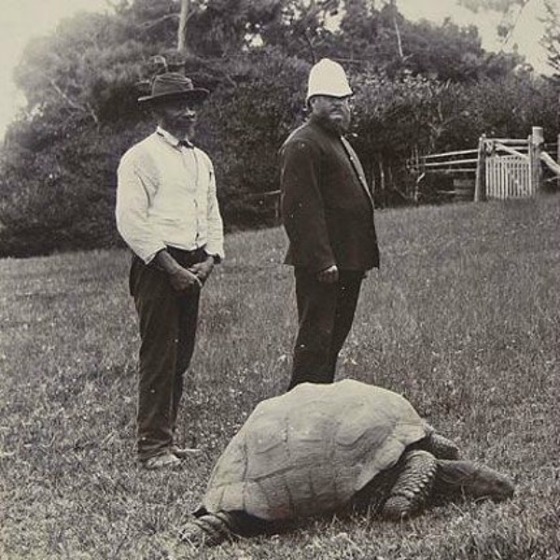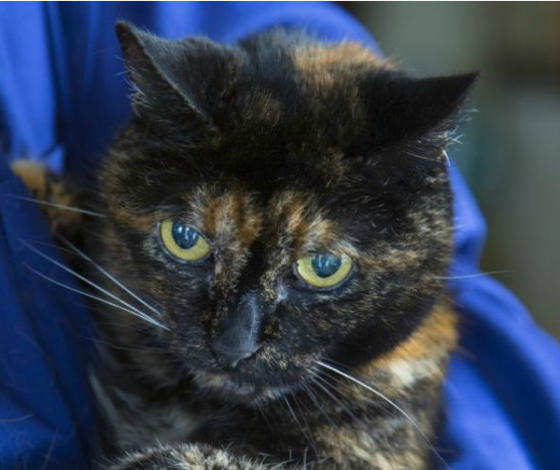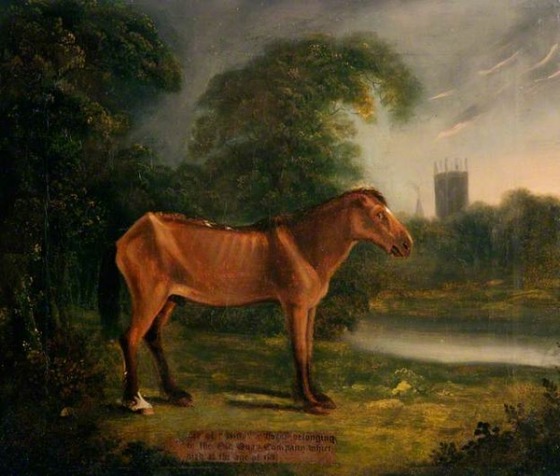PINK FAIRY ARMADILLO
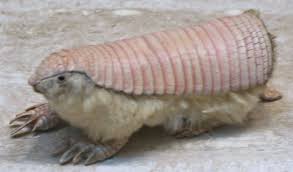
Pink fairy armadillos have small eyes, silky yellowish white fur, and a flexible dorsal shell that is solely attached to its body by a thin dorsal membrane. In addition, its spatula-shaped tail protrudes from a vertical plate at the blunt rear of its shell. This creature exhibits nocturnal and solitary habits and has a diet that is mainly composed of insects, worms, snails, and various plant parts.
Unfortunately, the conservation status for pink fairy armadillo is still uncertain, and it is listed as Data Deficient by the IUCN Red List of Threatened Species.
AYE-AYE
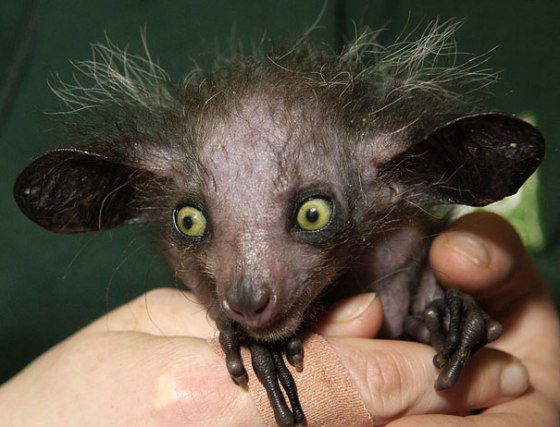
It is the world’s largest nocturnal primate, and is characterized by its unusual method of finding food; it taps on trees to find grubs, then gnaws holes in the wood using its forward slanting incisors to create a small hole in which it inserts its narrow middle finger to pull the grubs out. This foraging method is called percussive foraging which takes up 5-41% of foraging time. The only other animal species known to find food in this way is the striped possum. From an ecological point of view the aye-aye fills the niche of a woodpecker, as it is capable of penetrating wood to extract the invertebrates within.
The aye-aye is the only extant member of the genus Daubentonia and family Daubentoniidae. It is currently classified as Endangered by the IUCN; and a second species, Daubentonia robusta, appears to have become extinct at some point within the last 1000 years.
THE MANED WOLF
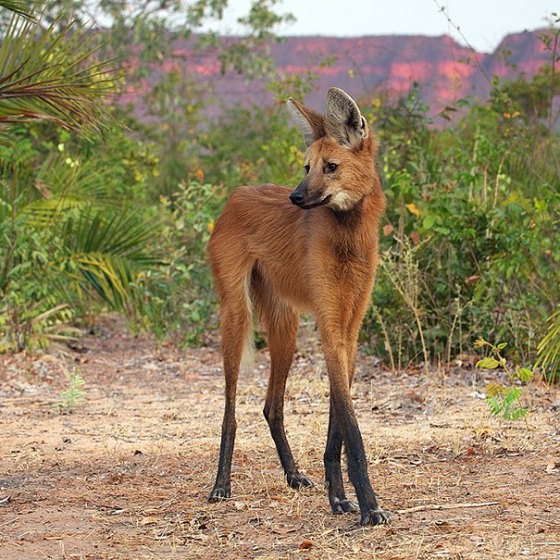
This mammal is found in open and semi-open habitats, especially grasslands with scattered bushes and trees, in south, central-west, and southeastern Brazil , Federal District, and recently, Rio Grande do Sul), Paraguay, northern Argentina, Bolivia east and north of the Andes, and far southeastern Peru (Pampas del Heath only).It is very rare in Uruguay, possibly being displaced completely through loss of habitat. IUCN lists it as near threatened, while it is considered a vulnerable species by the Brazilian government.
TUFTED DEER
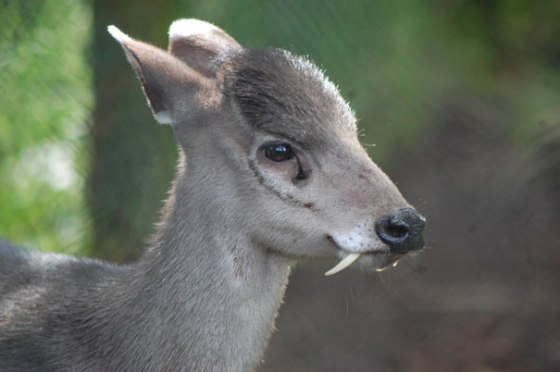
The tufted deer is a small species of deer characterized by a prominent tuft of black hair on its forehead and fang-like canines for the males. It is a close relative of the muntjac, living somewhat further north over a wide area of central China northeastern Myanmar and have been recently seen in Afghanistan after it last appearance 60 years ago. Although suffering from overhunting and habitat loss, this deer is not considered to be endangered. It is the only member of the genus Elaphodus. It is restricted to forested mountain habitat up to 4500 m above sea level, making study difficult.
DUMBO OCTOPUS
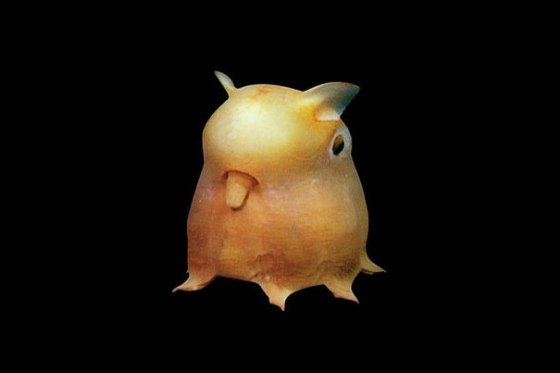
Grimpoteuthis is a genus of pelagic umbrella octopus that live in the deep sea. Prominent ear-like fins protrude from the mantle just above their lateral eyes. They have a U or V shaped shell in their mantle which gives them a bell shaped appearance. Some species are short, squat and yellow, while others resemble a jellyfish with one big brown walking shoe[clarification needed. Some have suckers, in addition to spines, on all 8 webbed arms while others look like a regular octopus with the addition of blue or other coloured “ears”. These octopuses are commonly nicknamed “Dumbo octopuses” or “Dumbo octopods” in reference to how the ear-like fins protruding from the top of their head-like bodies resemble the ears of Walt Disney’s flying elephant Dumbo. There are at least 13 species recognized in the genus, each having a different aspect from all the others. These features could be larger ears or different colours. As these animals live at the bottom of the sea they have a very small food supply. Prey include crustaceans, bivalves, worms and copepods.The average life span of various Grimpoteuthis species is 3 to 5 years.
PATAGONIAN MARA
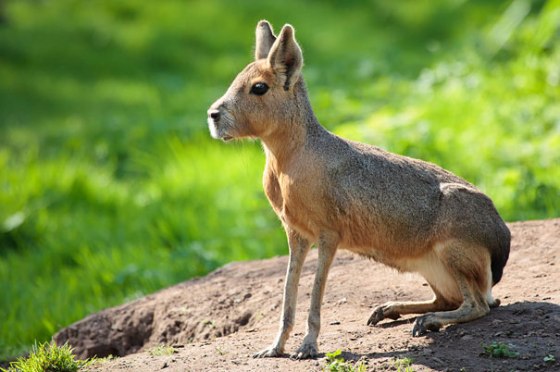
The Patagonian mara is found only in Argentina. It ranges from 28ºS to 50ºS. Maras prefer to live in habitats with lots of shrub cover. However they also inhabit overgrazed and barren soils in the Monte Desert biome.In northwestern Argentina the mara primarily inhabits lowland habitats like forest and creosote bush or larrea. Maras prefer sandy and low shrub habitat in Valdes Peninsula.It has adapted well to a cursorial lifestyle on the open plains and steppe, with its long legs, reduced clavicle and well-developed sensory organs making it capable of running and communicating in these open habitats.
NAKED MOLE RAT
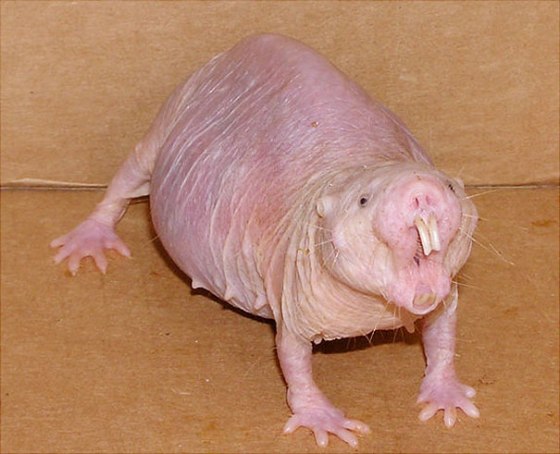
The naked mole-rat (Heterocephalus glaber), also known as the sand puppy or desert mole rat, is a burrowing blesmol native to parts of East Africa and is the only species currently classified in the genus Heterocephalus. The naked mole-rat and the Damaraland mole-rat are the only known eusocial mammals. It has a highly unusual set of physical traits that enable it to thrive in an otherwise harsh underground environment; it is the only mammalian thermoconformer.
The mole rat lacks pain sensitivity in its skin, and has very low metabolic and respiratory rates. While traditionally considered to belong to the same family as other African mole-rats, the Bathyergidae, more recent investigation suggests that the naked mole-rat is sufficiently divergent to be placed in a new, separate family, Heterocephalidae. The mole rat is also remarkable for its longevity and its resistance to cancer.
IRRAWADDY DOLPHIN

One of the earliest recorded descriptions of the Irrawaddy dolphin was by Sir Richard Owen in 1866 based on a specimen found in 1852, in the harbour of Visakhapatnam on the east coast of India. It is one of two species in its genus. It has sometimes been listed variously in a family containing just itself and in Monodontidae and in Delphinapteridae. There is now widespread agreement to list it in the family Delphinidae.
Genetically, the Irrawaddy dolphin is closely related to the killer whale (orca). It is also closely related to the Australian snubfin dolphin, and these two were only recently recognised as distinct species. The species name brevirostris comes from the Latin meaning short-beaked. In 2005, genetic analysis showed the Australian snubfin dolphin found at the coast of northern Australia forms a second species in the Orcaella genus.
THE GERENUK
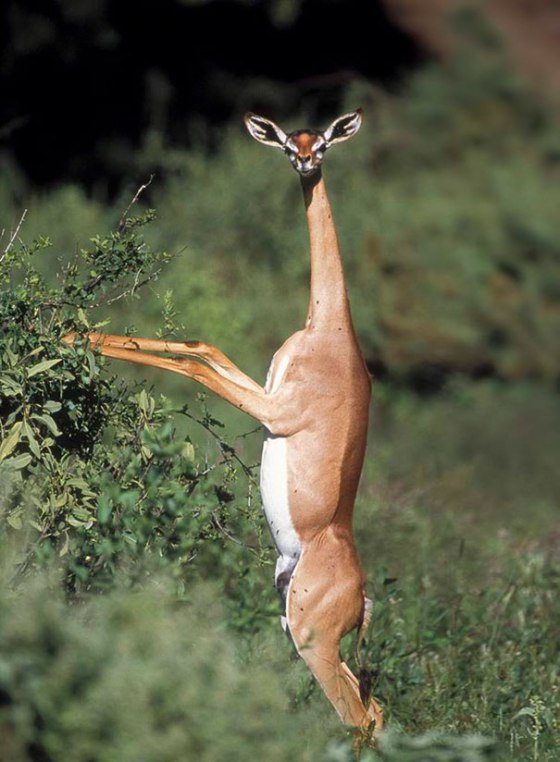
The gerenuk also known as the Waller’s gazelle, is a long-necked species of antelope found in dry thorn shrubland and desert in the Horn of Africa and the African Great Lakes region. The word gerenuk comes from the word in the Somali language, Garanuug, meaning “giraffe-necked”. Gerenuk are sometimes also called the giraffe-necked antelope. It is the sole member of the genus Litocranius.
The gerenuk was first described by Anglo-Irish naturalist Victor Brooke in 1878. Its scientific name is Litocranius walleri. It is the sole member of the genus Litocranius, and is placed in the family Bovidae. In 1997, Colin Groves had proposed that Litocranius is a sister taxon of Ammodorcas, but reverted from this in 2000.
DUGONG
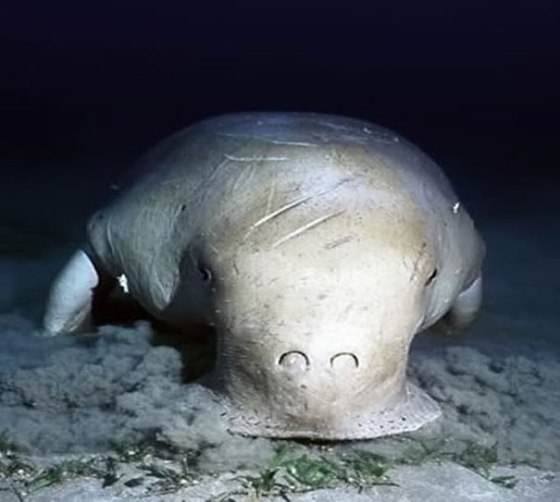
The dugong is a medium-sized marine mammal. It is one of four living species of the order Sirenia, which also includes three species of manatees. It is the only living representative of the once-diverse family Dugongidae; its closest modern relative, Steller’s sea cow (Hydrodamalis gigas), was hunted to extinction in the 18th century. The dugong is the only strictly marine herbivorous mammal.
The dugong is the only sirenian in its range, which spans the waters of some 40 countries and territories throughout the Indo-West Pacific. The dugong is largely dependent on seagrass communities for subsistence and is thus restricted to the coastal habitats which support seagrass meadows, with the largest dugong concentrations typically occurring in wide, shallow, protected areas such as bays, mangrove channels, the waters of large inshore islands and inter-reefal waters. The northern waters of Australia between Shark Bay and Moreton Bay are believed to be the dugong’s contemporary stronghold.



